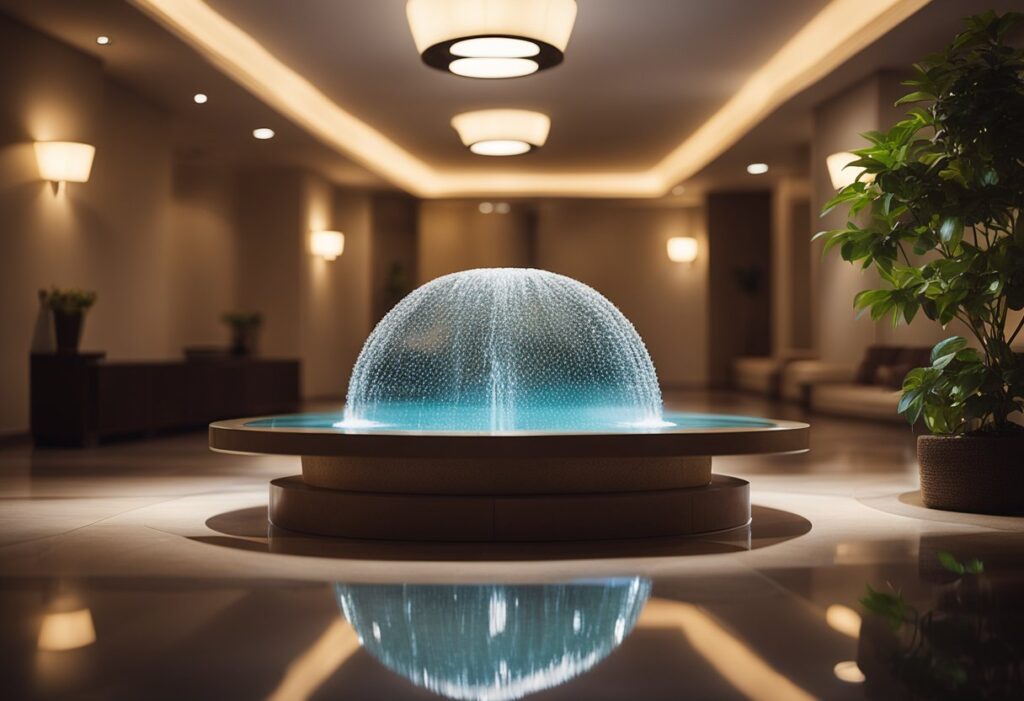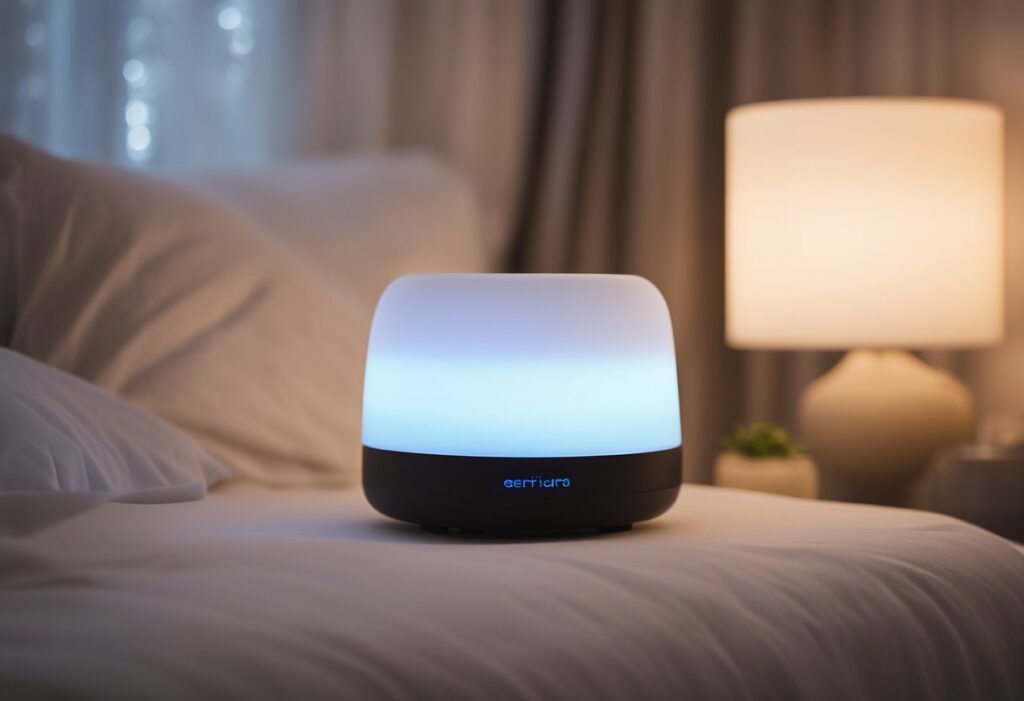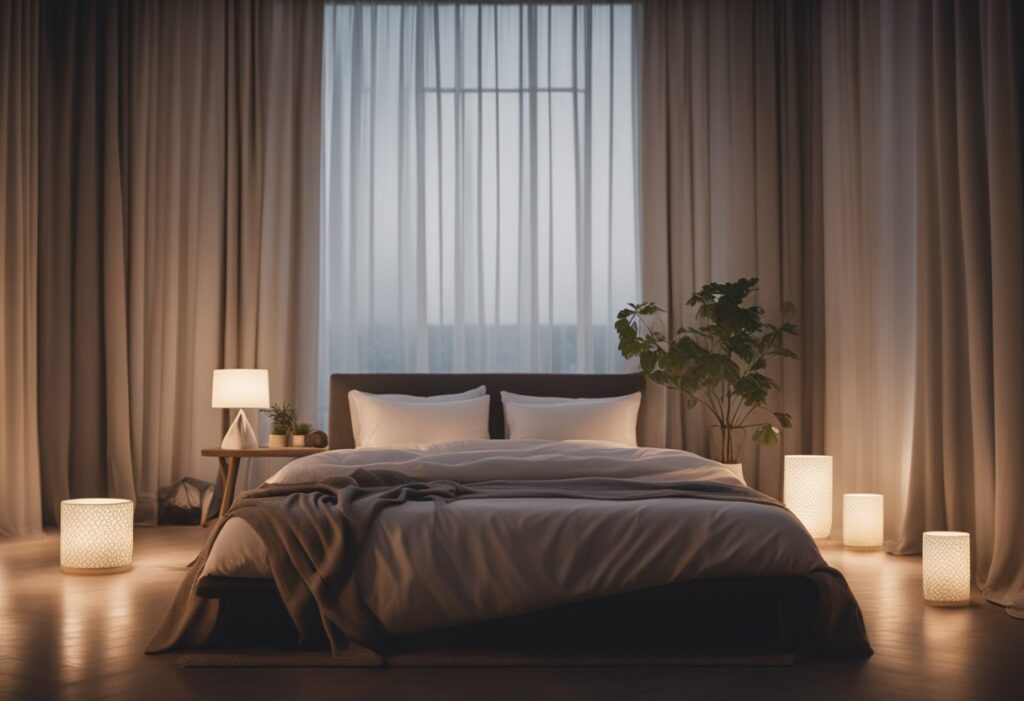Meditation for Sleep

Harnessing Mindfulness for Better Rest
Meditation is increasingly being recognized as a beneficial tool for improving sleep quality. Poor sleep is a common problem affecting millions of people worldwide, leading to a range of health concerns. Research indicates that incorporating meditation into one’s nightly routine can help individuals fall asleep faster, enhance the quality of rest, and reduce symptoms of insomnia.

As a practice that focuses on cultivating a state of calm and relaxation, meditation can directly impact the nervous system. It prompts the shift from the active sympathetic state to the more restorative parasympathetic state, which is conducive to sleep. Numerous meditation techniques, such as mindfulness, guided imagery, and progressive relaxation, can be tailored to individual preferences to aid in better sleep.
Healthcare professionals and sleep experts often recommend meditation as part of a holistic approach to sleep hygiene. By integrating meditation into their bedtime rituals, individuals may find that they experience less sleep-related anxiety and disruptions, leading to a more restorative sleep cycle. With consistent practice, meditation for sleep can become an effective component in achieving and maintaining healthy sleep patterns.
Understanding Meditation for Sleep
Meditation for sleep involves techniques designed to prepare the mind and body for restful slumber. Practitioners focus on calming the mind, reducing stress, and promoting relaxation, creating ideal conditions for sleep.
Key Components of Sleep Meditation:
- Mindfulness: Staying present and aware of the moment without judgment.
- Deep Breathing: Utilizing slow, deep breaths to trigger the body’s relaxation response.
- Body Scanning: Progressively relaxing each part of the body to release physical tension.
Benefits:
- Reduces stress and anxiety
- Enhances overall sleep quality
- Helps in developing a regular sleep pattern
A typical meditation routine for sleep might include:
- Finding a quiet, comfortable space
- Starting with a few minutes of deep breathing
- Transitioning into a body scan starting from the toes and moving upwards
- Ending with mindfulness or visualization techniques to clear the mind of intrusive thoughts
Regular practice often leads to improved sleep latency, the time it takes to fall asleep, and can enhance both the duration and quality of sleep. It’s important to practice consistently for optimal results.
It’s suggested that individuals consult with a healthcare provider before starting any new wellness routine, especially if they have existing health conditions or concerns.
Preparation for Meditation

Before beginning a meditation for sleep, one should create a conducive environment. The space should be quiet, dimly lit, and at a comfortable temperature. It’s recommended to wear loose, comfortable clothing.
Creating a Routine:
- Time: They should choose a consistent time to meditate, preferably before bedtime.
- Duration: Start with 5-10 minutes, gradually increasing the time as comfort with the practice grows.
Setting the Space:
- Lighting: Dim or turn off bright lights. Consider using soft lamp light or candles.
- Noise: Minimize distractions by turning off electronic devices or using earplugs.
Positioning:
- Posture: Sit or lie down in a comfortable position. Keep the spine straight to maintain alertness.
- Support: Use cushions or pillows to support the body if necessary.
Tools for Meditation:
- Music: Gentle, slow-paced instrumental music can be calming.
- Guided Meditations: An audio recording can help guide one’s thoughts and maintain focus.
Mental Preparation:
- Intention: Set a clear intention for the session, such as easing into sleep.
- Mindfulness: Encourage an attitude of non-judgmental awareness of the present moment.
By adhering to these preparations, they promote a more effective and enjoyable meditation experience which can facilitate a smoother transition into sleep.
Types of Meditation for Sleep
Meditation can be a valuable tool for enhancing sleep quality. Various forms are utilized to promote relaxation and address the underlying issues hindering sleep.
Mindfulness Meditation: This involves the practice of being fully present and aware of the moment, without judgment. Practitioners focus on their breath or bodily sensations to anchor the mind, which often leads to a state conducive to sleep.
Guided Meditation: Through guided sessions, often with a voice recording or instructor, individuals are led through a series of relaxing visualizations or instructions. This technique helps to quiet the mind and prepare the body for rest.
Body Scan Meditation: Beginning at one end of the body and moving through to the other, practitioners pay close attention to physical sensations within each part of the body. This method promotes awareness and relaxation.
Breath Awareness Meditation: Concentration is solely on the rhythms of breathing. This focus can soothe the nervous system and decrease stress, making it easier to fall asleep.
Progressive Relaxation: Also known as progressive muscle relaxation, it involves tensing and then relaxing different muscle groups. This method helps to recognize and release physical tension.
Mantra Meditation: The use of a calming word or phrase, repeated silently, can help in maintaining focus and drifting off to sleep.
No particular type is best for everyone; individuals are encouraged to explore different styles to find what works most effectively for them.
Benefits of Meditation for Sleep

Regular meditation can significantly enhance the quality of sleep for individuals. It provides a means to ease the mind and body into a state conducive for rest. By integrating meditation into one’s nightly routine, one can experience multiple sleep-related improvements.
- Stress Reduction: Meditation activates the body’s relaxation response through the practice of deep, rhythmic breathing and mindfulness, which helps decrease stress levels.
- Improved Sleep Onset: With the reduction of stress, an individual’s mind is less likely to be preoccupied with worrisome thoughts, making the onset of sleep easier.
- Better Sleep Quality: As meditation encourages relaxation and a calm mental environment, the depth and quality of sleep can improve, leading to a more restorative rest period.
| Aspect | Benefit |
|---|---|
| Onset | Quicker transition to sleep |
| Duration | Longer, uninterrupted sleep |
| Depth | More profound, restful stages |
By creating a state of calmness, meditation reduces the incidence of sleep-disrupting factors like anxiety and restlessness. With consistent practice, individuals may find themselves less reliant on sleep aids and more in tune with their body’s natural sleep-wake cycle. They can attain a regular sleep schedule, which is crucial for overall health and well-being.
Furthermore, the techniques learned in meditation can be used to return to sleep after waking during the night, a common challenge for many. One develops the ability to gently guide their focus away from disruptive thoughts and back to the relaxation needed for sleep. Through this mindful practice, sleep becomes more rejuvenating and satisfying.
Step-by-Step Guide to Meditating Before Bed

Engaging in meditation before bed can assist individuals in attaining deeper and more restful sleep. Here is a straightforward guide to perform bedtime meditation:
- Prepare the Environment
- Ensure the room is quiet and dimly lit.
- Use comfortable seating or cushions.
- Consider a blanket for warmth if needed.
- Set a Schedule
- Choose a consistent time each night.
- Limit the session to 5-20 minutes, based on personal preference.
- Relax the Body
- Sit or lie down in a comfortable position.
- Close the eyes and take deep, slow breaths.
- Progressively relax each muscle group, starting from the toes and moving upwards.
- Focus the Mind
- Concentrate on the breath’s rhythm.
- Acknowledge passing thoughts without engaging with them.
- Redirect attention to breathing whenever the mind wanders.
- Use a Guiding Technique
Choose one of the following methods to maintain focus:- Mantra: Repeat a calming word or phrase.
- Visualization: Picture a serene scene, like a tranquil lake.
- Mindful Observation: Notice sensations in the body without judgment.
- Closing the Session
- Gradually return attention to the room.
- Open the eyes and stretch gently.
- Lay down to sleep, maintaining the calm achieved during meditation.
By adhering to these steps, they can foster a conducive state for restful sleep. Regular practice may lead to improved sleep quality and overall well-being.
Common Challenges and Solutions

Difficulty Concentrating
- Challenge: A wandering mind can make it hard to focus during meditation.
- Solution: Use guided meditations or focus on the breath to anchor attention.
Restlessness
- Challenge: Physical discomfort or restlessness may arise.
- Solution: Ensure a comfortable posture and gradually increase meditation duration.
Falling Asleep Too Quickly
- Challenge: Some may fall asleep before achieving a meditative state.
- Solution: Meditate in a seated position or practice during times of alertness.
Overthinking
- Challenge: Excessive thinking can prevent relaxation.
- Solution: Acknowledge thoughts without judgement and return focus to the breath.
Inconsistency in Practice
- Challenge: It can be challenging to maintain a regular meditation routine.
- Solution: Set a specific time for meditation and create a conducive environment.
External Distractions
- Challenge: Noise and interruptions can disrupt meditation.
- Solution: Use noise-cancelling headphones or choose a quiet time and place.
Unrealistic Expectations
- Challenge: Expecting immediate results may lead to disappointment.
- Solution: Understand that benefits develop with persistent practice.
| Challenges | Solutions |
|---|---|
| Difficulty Concentrating | Guided meditations, breath focus |
| Restlessness | Comfortable posture, incrementally longer sessions |
| Falling Asleep Too Quickly | Seated meditation, practice when alert |
| Overthinking | Acknowledge thoughts, return to breath |
| Inconsistency in Practice | Set specific times, create a routine |
| External Distractions | Noise-cancelling headphones, quiet environment |
| Unrealistic Expectations | Adjust expectations, be patient with progress |
Measuring the Effectiveness of Sleep Meditation

When evaluating the effectiveness of sleep meditation, several objective and subjective measures can be employed. Researchers and individuals alike may utilize these methods to assess the impact of meditation on sleep quality.
Objective Measures:
- Polysomnography (PSG): This is a comprehensive sleep study used to diagnose sleep disorders. PSG monitors brain waves, oxygen levels, heart rate, and breathing, providing data on sleep stages and disturbances.
- Actigraphy: A wearable device that tracks movement and can approximate sleep patterns over several days.
- Sleep Diaries: Individuals record their daily sleep times, quality, and patterns, offering insights over extended periods.
Subjective Measures:
- Self-Assessment Questionnaires: Tools such as the Pittsburgh Sleep Quality Index (PSQI) allow individuals to self-report their sleep quality and disturbances.
- Meditation Logs: Participants may keep track of their meditation practices and subsequent sleep experiences to notice any correlations.
It’s crucial to combine multiple methods when measuring sleep meditation’s effectiveness to provide a comprehensive view. For instance, actigraphy can provide objective data, while self-assessment questionnaires can capture the subjective experience of sleep quality. Experts often recommend a period of consistent meditation practice before drawing conclusions, as the effects on sleep may evolve over time. By systematically recording and analyzing these measures, one can determine the tangible benefits of meditation on sleep.
Integrating Meditation into Your Sleep Routine

Incorporating meditation into a sleep routine can facilitate a smoother transition to sleep. Individuals may start by setting aside 5-10 minutes before bed to practice meditation. Consistency is key, so one should attempt to meditate at the same time every night.
Steps to Follow:
- Prepare the Environment:
- Dim the lights
- Ensure the room is quiet
- Maintain a comfortable temperature
- Choose a Position:
- Sit comfortably or lie down
- Use pillows for support if necessary
- Select a Meditation Technique:
- Mindfulness
- Body scan
- Guided imagery
- Focus on Breathing:
- Inhale deeply through the nose
- Exhale slowly through the mouth
- Repeat and let the breath guide the meditation
- End Gradually:
- Slowly become aware of the room
- Gently move fingers and toes
- Open the eyes slowly
Individuals should remain patient as they integrate meditation into their sleep routine and may adjust the duration and techniques to fit their preferences. Regular practice can lead to improved sleep quality. It’s advised to avoid screen time after meditation to prevent disrupting the relaxation achieved through the practice.
Frequently Asked Questions

Exploring meditation’s role in improving sleep quality involves understanding specific methods and their effectiveness. This section addresses common inquiries about meditating for sleep enhancement.
What are the best guided meditations for improving sleep quality?
Guided meditations specifically designed for sleep often incorporate techniques such as progressive muscle relaxation, deep breathing, and visualization. Apps like Headspace and Calm offer popular sessions which have been favorably reviewed by users for sleep improvement.
How does meditation music influence sleep, and what types are most effective?
Meditation music can slow the heart rate and lower blood pressure, promoting relaxation. Soothing genres such as classical, ambient, or nature sounds are considered most effective for sleep due to their gentle and repetitive melodies.
Can practicing meditation before bed help with anxiety and promote better sleep?
Yes, engaging in meditation before bedtime can reduce anxiety levels, owing to its calming effect on the mind. It helps individuals transition to a sleep-conducive mental state by easing stress and creating a sense of peace.
What are some recommended strategies for meditating to fall asleep swiftly?
It is recommended to focus on the breath, count breaths, or visualize a serene location. Keeping the environment conducive to sleep, such as a dark and quiet room, also supports a quick transition to slumber.
Are there any free meditation apps recommended for aiding sleep and reducing insomnia?
Several apps offer free meditation content that can help with sleep and insomnia. Insight Timer and MyLife Meditation are two examples that provide a range of meditation practices at no cost.
Is there a preferred duration for a sleep-enhancing meditation session?
A sleep meditation session can range from 5 to 30 minutes. However, the ideal duration is subjective and can be personalized based on the individual’s needs and nightly routine. Consistency is often more important than length.
